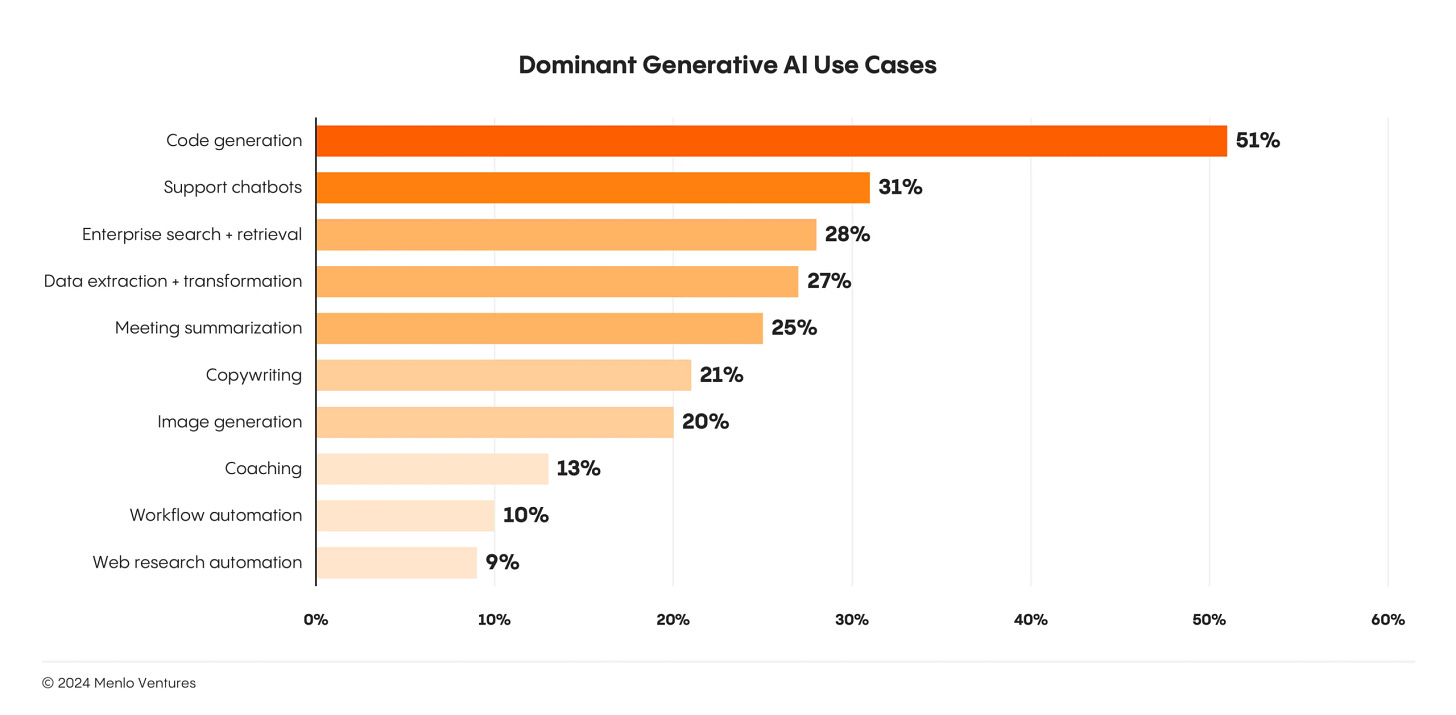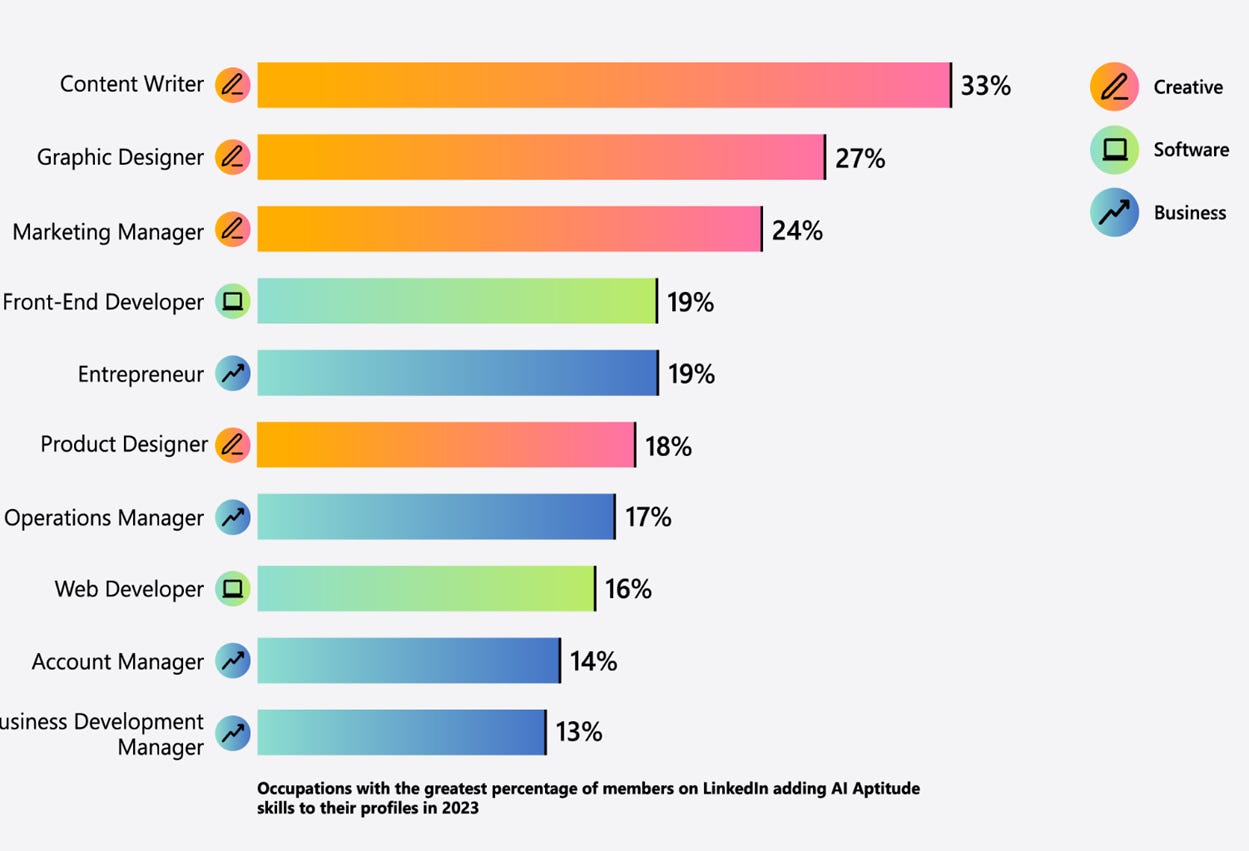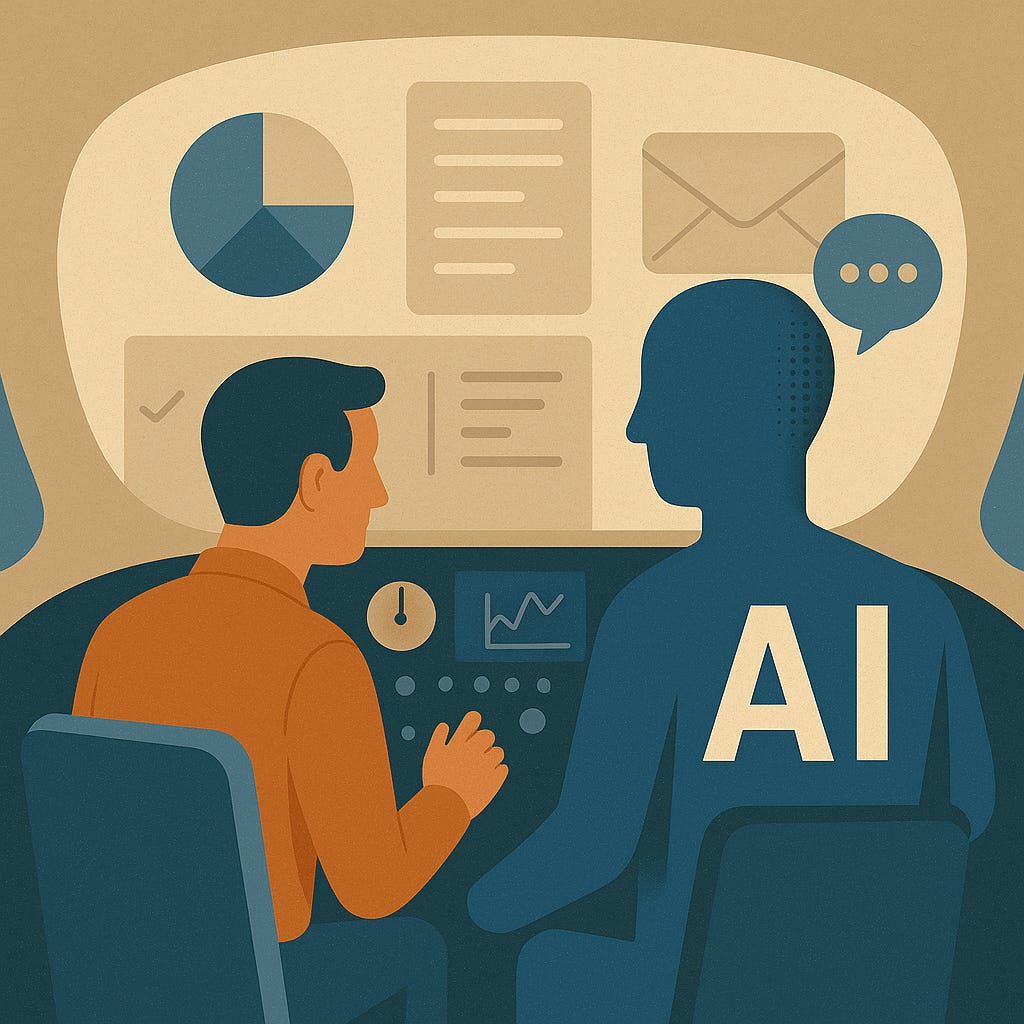Exploring AI Work Trends
How works use generative AI today and what the future might bring
Microsoft has been releasing their “Work Trend Index” for the last few years that attempts to show how technology is reshaping work now and in the future. There is lots of reporting and research around AI of course, I think these are easy-to-read briefs that provide interesting and provocative ideas. We just released our latest report last month that provides interesting survey data and predictions how companies will utilize and adapt AI in the future, and I thought it would be fun to dive into it a little bit here (along with some additional content).
2025: The Frontier Firm is Born
The 2025 report sees our opportunity with AI today as comparable to the early days of the internet, with AI becoming an “essential durable good” that businesses must leverage moving forward if they want to remain competitive. Predictions include widespread use of agents that increasingly become more autonomous and act as a digital worker base that human workers oversee, as shown visually below.
There’s some interesting research on how people are interacting with AI as well. One highlight was a look at why employees are turning to AI more as time goes on. Top reasons include: 24/7 availability, endless ideation, and fear of human judgement.
These resonate with me personally and make intuitive sense – yes AI is a powerful standalone tool, but what really sets it apart is how custom and abundant the results are. AI is eager to help you do whatever it is that you want to do, whenever you want to do it. You can ask it as many stupid questions as you want as you try to understand something, and it provides supportive affirming responses throughout. You typically have to ask it to be critical, if that’s what you want from it.
There’s more here, especially the Resource Guide at the end (which I highly recommend!) that provides a bunch of practical resources to further your AI journey along. You can dive to the full report here: 2025: The Year the Frontier Firm Is Born
2024: AI at Work Is Here
This is all very interesting, we’re more focused on AI’s practical use here. The 2024 Work Trend Index provides a detailed look at how employees are integrating AI into their daily work today. This may be slightly outdated but considering how early we all are in figuring all this out, it’s all still very relevant today.
AI at Work Is Here. Now Comes the Hard Part
Front and center is the infiltration that AI is already making into our workforce. Whether sanctioned or not, most (75%) of knowledge workers are using AI for work and they are finding a ton of value from it. And it’s not just young people.

What types of workers from what industries are adopting AI most frequently? The below chart (more detail in the full report) lays out an interesting story.
Content writing tops the chart, which makes sense, it’s the bread and butter for LLMs.
Graphic design has many new and interesting applications as we’ve explored a bit.
Marketing (which is heavy on content creation as well) is another obvious application – anecdotally, I can tell you from colleagues and friends in the industry, that it has completely changed how they work.
Coding is another popular use case as well, as shown further below, and companies are increasingly making bets, showcasing success, and predicting trends that should make any coder who is not already somewhat advanced with AI a bit nervous.
Looking at the chat, what stands out to me is - in an unexpected twist from historical thinking about AI - creative applications reign supreme.
How Employees Are Using AI Today
Let’s explore further what people are doing at work. According to another AI research report, we find a useful visual:

Coding tops the list, which does make sense – it’s expensive work that AI is doing increasingly well and will likely continue to improve.
Custom Chatbots are high-value to enterprises, with many already training their own for customer use. (Check out this chatbot shopping demo from Microsoft last year for a view of the future.)
Enterprise search and retrieval – something that I now use daily. Do you spend time searching Teams chats, Outlook, SharePoint, etc. for stuff? Forget that – just bring up copilot and ask it to find what you need, it does a good job of it most of the time.
Data extraction and transformation – I personally haven’t used it for this much but lots here to explore, especially Copilot for Excel and advanced capabilities of chatbots like ChatGPT.
Finally to round out the top five meeting summarization and enhancement, which I assert emphatically is the killer app for work and something that will change your work life if you find yourself in lots of work meetings throughout the day. Nearly a quarter of companies have adopted AI meetings already. Using Microsoft Copilot or another tool is going to be your best bet, but you can also produce similar results manually if interested mentioned in my previous post.
As the 2025 Work Index report suggests, this list will likely expand to more “agentic” uses as time goes on. Increasingly, we will think about AI as interns, research assistants, developers, copyright editors, and the many other roles they will play for us at work.
AI in the workplace is no longer optional
Generative AI is already transforming the modern workplace, and if the 2025 report is any indicator, will be increasingly doing so as time marches on. As AI becomes more embedded in our daily work, and agents within our organizations, the message is clear: companies and workers who embrace AI early will be best positioned to lead in the years ahead.





